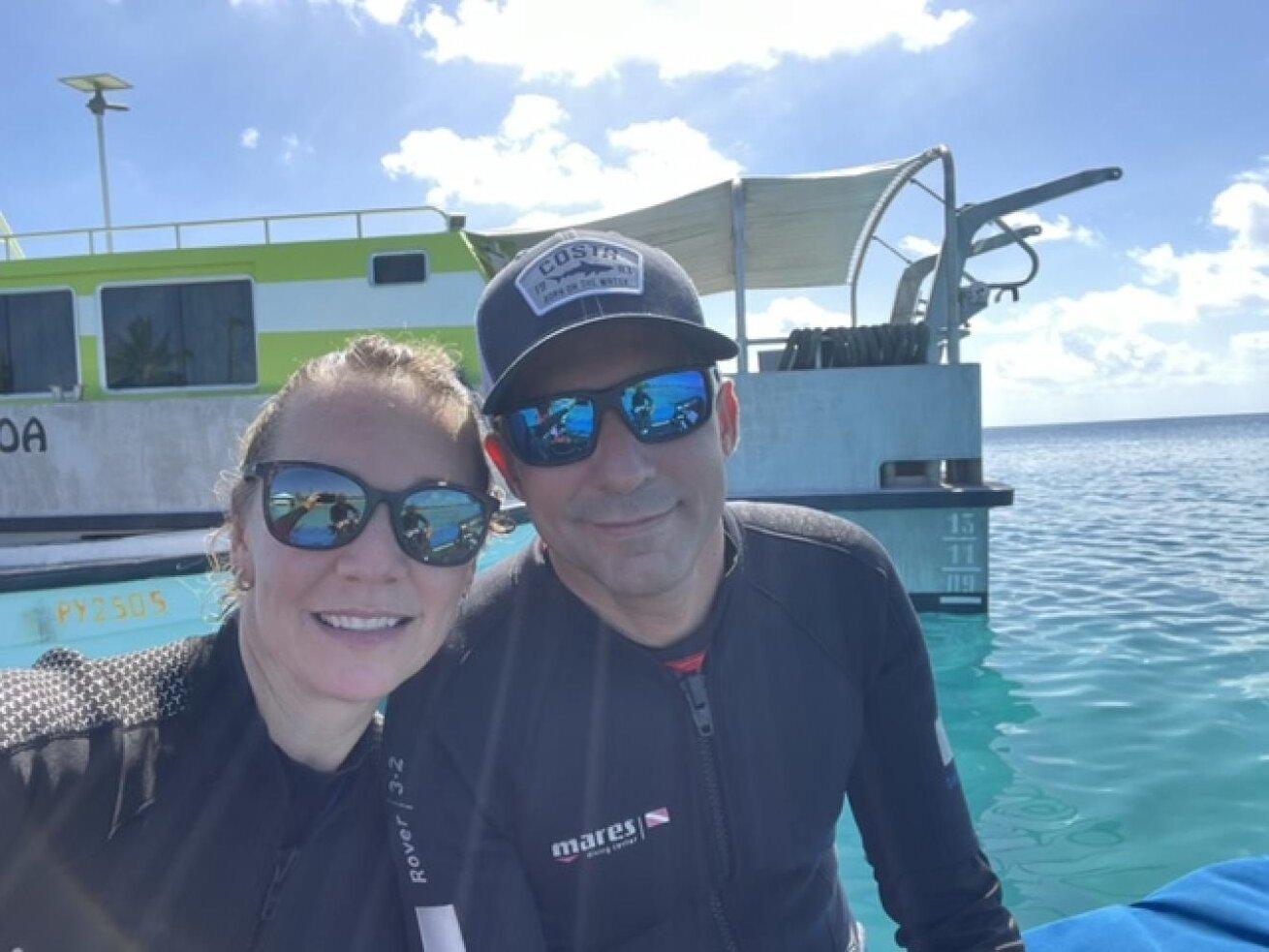What It’s Like to Dive After a Traumatic Brain Injury

Courtesy ImaeReyes poses with Terry Ward, his wife and co-author, in Tahiti.
Scuba Diving magazine does not provide medical advice. Everyone should speak with a doctor about their particular situation before returning to diving, especially following injury. The Diver’s Alert Network is also a good, additional resource for medical concerns related to diving after injury.
Before my accident, I only managed to log about 12 dives, but I was feeling pretty hooked on diving already. I’d gotten certified in the Florida Springs and done a few dives in La Paz, Mexico with the sea lion colony at Los Islotes. It was magical. Even if my ears always gave me a little trouble equalizing going down, I was feeling more confident and comfortable underwater with each dive.
A month later, however, I was in the intensive care unit of my local hospital in Florida.
While painting a deck, I fell from an eight-foot-ladder. I don’t remember anything from the fall—or anything from that day, for that matter—not to mention much of the two weeks in the hospital that followed. My injuries included a compressed vertebrae, broken thumb, lots of scrapes and bruises and, most harrowing of all, a mild traumatic brain injury, which is considered a bit worse than a concussion. I’d hit my head when I fell, and my brain had sloshed around in my skull, getting bruised.
At some point during my recovery, my wife says I asked her if I’d ever be able to dive again. She said I tried to ask my doctors if they could look at my ears while they were checking out everything else during my recovery–I’d always had trouble equalizing, and apparently figured why not get to the bottom of that while I was stuck in the hospital.

Courtesy ImageReyes snorkels, the first step on his return to the underwater world.
I don’t remember any of this at all. The hospital days were such a blur. But my recovery was miraculous and when I had my final checkup with a neurosurgeon a few months later, I was told I was cleared to drive–and dive!–again.
I couldn’t wait to get back in the water. But I’d be lying if I said I wasn’t worried about how I would feel diving again. So I started with snorkeling at first, getting used to the sensation of freediving down and listening to the crackles and pops of the underwater world, seeing if my brain would do anything crazy. I had to learn to trust my body again.
Six months after my injury, my wife and I went on a dive trip to Tahiti. I’m from the Caribbean and she told me I had to see the Pacific as a diver. It would be my first time diving since the injury, and I was nervous. On the first dive, I felt panicked on the surface already, and got straight back on the boat. I tried again the next day and managed to get a few feet underwater, but something about not being able to see the bottom (the water was deep) made me cancel the dive before we got down. It felt like I was having a flashback to the fall that I couldn’t remember. After that, I stuck to snorkeling for a few days and was pretty amazed to see all the species–including Napoleon wrasse and Picasso triggerfish–that don’t exist in the Caribbean. The Pacific really was a whole new world.
On our last dive day in Fakarava in the Tuamotu Atolls, I decided to give diving another go.
My instructor made all the difference. He was such a calming force on the surface and once we got underwater, too. He let me know we weren’t in any hurry and made me feel so comfortable from the start. He took the time to help me descend so calmly, overcoming the vertigo I’d felt on the previous attempts and make it down at Tetamanu Pass. Tetamanu is one of the world’s famous dives, full of grey reef sharks that seem to take up the entire ocean around you.
But, for me, I could have been anywhere and looking at anything that day. The highlight was finding my comfort zone again underwater after such a traumatic topside experience–and knowing that I’d finally found my way back to diving, a step toward returning to the rest of life.
Are you ready to step up, help save the ocean, and #LiveUnfiltered at the same time? Sign up for a PADI Open Water Diver course now.










